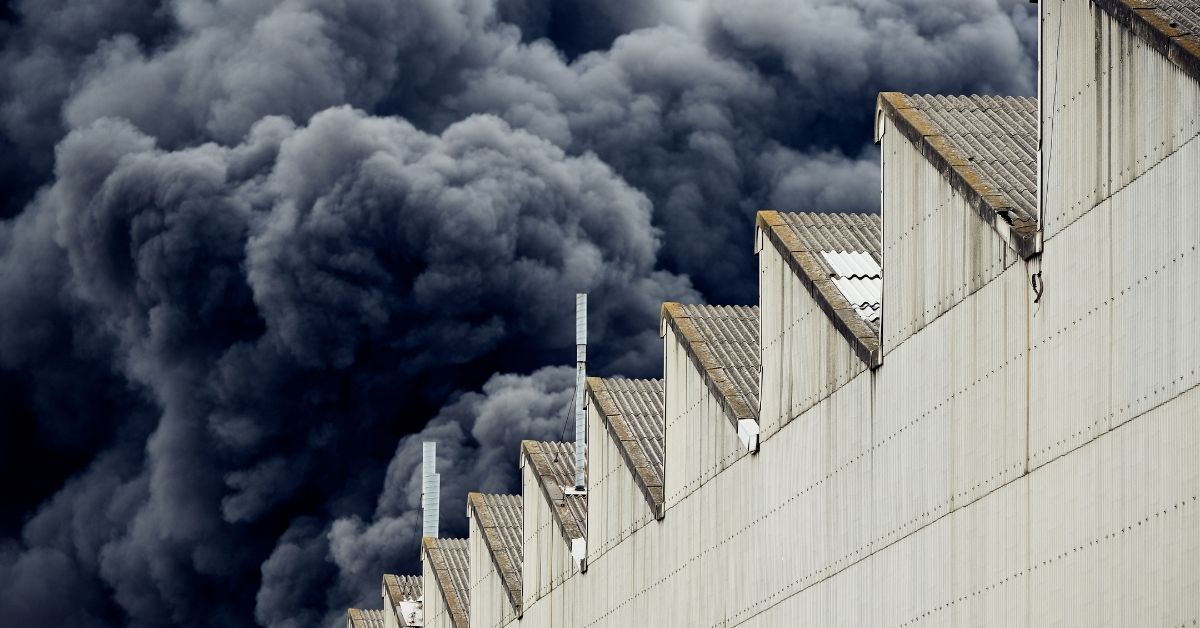Where we live, work, and go to school affects our health. Air pollutants from vehicles are found in higher concentrations near major roads, which can be dangerous.
It’s well-known that proximity to a highway, or high levels of vehicle emissions in general, is harmful to human health. Those who live, work, or go to school near highways and busy roads have more severe health issues.
Vehicle emissions contain many pollutants that, when breathed in, can do damage to the lungs, heart, and every other system of the body. And airborne pollutants along highways and busy roads are often higher than in other areas of the community. Studies have found living near a highway or busy road can even increase a person’s risk of premature death.
With 45 million people in the US (1), or 30-45% of the urban population in North America (2) living, working, or attending school within 300 feet of a major road, airport, or railroad, this is cause for concern. These people are at an increased risk for negative health symptoms related to airborne pollutants.
Nowadays, we aren’t just questioning whether it’s harmful anymore. Now we’re questioning just how harmful it actually is.
Which Particles Are Most Harmful?
Particle pollution of any kind is harmful, but ultra fine particles, or particles less than 0.1 μm or 100 nm in diameter, are the most dangerous. Because of their extra small size, they can more easily penetrate the body and cause negative health effects. Researchers are finding health risks of ultra fine particles are greatest within 300 feet of a highway (3).
Who is Most at Risk?
People with cardiovascular disease or diabetes also face risks. Airborne pollutants can increase risk for heart attacks, strokes, and medical attention.
Children and teenagers are among the most vulnerable. Their lungs are still developing, and breathing in air pollution may affect how they develop. They also tend to be more active outdoors, meaning they may inhale more outdoor air pollutants. Children also face greater risk of infection, coughing, and bronchitis.
Older adults are also at risk. As people get older, their bodies are at greater risk to negative health effects from dirty air, including respiratory and cardiovascular issues and more.
Health Effects of Highway Pollution
The Cardiovascular System
Studies also show highway pollution affects the heart and cardiovascular system. Studies show traffic causes an increased risk of heart attacks.
The Lungs
Air pollution can cause shortness of breath, chest pain, wheezing, coughing, asthma attacks, and increased need for medical attention and emergency room visits.
Airborne pollutants from the highway can cause higher rates of asthma onset and aggravation, impaired lung function, COPD, impaired lung development in children,
Cognition
Adults living near a highway or busy road may risk dementia. In 2017, a study of residents in Ontario, Canada found those who lived closer to a busy road had higher risks of dementia. Researchers found those with the highest risk were those who lived closest to the road, who never moved, and who lived in major cities.
A study of older men in 2011 also found long-term exposure to traffic pollution decreased cognitive function in general.
Air Purification is Essential Near a Highway
Austin Air purifiers are the most effective defense against highway pollution. With the most robust air purification technology on the market, Austin Air purifiers remove 99% of airborne pollutants as small as 0.1 microns. Filters contain 60 square feet of medical-grade Certified HEPA Material and up to 15 pounds of activated carbon to remove particles, gasses, and VOCs. This combination of Certified HEPA Material and carbon is recommended by the CDC, WHO, and EPA. Plus, Austin Air is the ONLY clinically proven air purification solution on the market. We’ve outperformed more than 100 other air purifiers in government tests.
References:
- https://www.epa.gov/sites/default/files/2015-11/documents/420f14044_0.pdf
- https://www.lung.org/clean-air/outdoors/who-is-at-risk/highways
- https://needhamma.gov/DocumentCenter/View/8783/CathrynSmithSpeech_81513?bidId=#:~:text=Over%20the%20last%2030%20years,will%20disproportionately%20suffer%20their%20effects.



